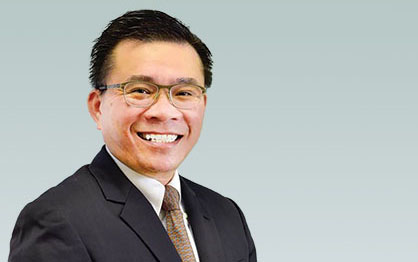Raising agri-yields through biotechnology

Dr. Siang Hee Tan, executive director of CropLife Asia – the regional chapter of CropLife International,
and the voice of the global plant science industry
The world’s demand for food is rising. What are the challenges facing ASEAN particularly?
Agriculture is woven into the fabric of the cultures, traditions, and societies of the nations of Southeast Asia; and ASEAN is often recognised as the world’s most productive food basket. However, among the top eight agro-producing countries of ASEAN, agriculture accounts for around 20 per cent of national GDP on average, while the labour force working within the industry stands at a staggering 46 per cent average. The disparity between the two figures highlights the opportunity that exists within the ASEAN agricultural sector to realise greater efficiency and robustness.
How can plant science help us meet these challenges?
Biotechnology, which enables farmers to achieve higher yields while using less resources and limiting the impact on the environment, enables ASEAN not only to achieve short-term sustainability, but also food security for the future.
Farmers will enjoy improved livelihoods from these higher yields. If a farmer makes one metric tonne of rice per hectare, he’s only feeding his family and won’t be able to gain the maximum value from his crop. But if he has good seeds, from one metric tonne he can move to three. One metric tonne he can save for his family. The remaining two he can sell to fund his children’s schooling.
But most of the region’s farmers are poor and are likely unable to afford the technology. How can governments of ASEAN members help them?
It’s a chicken and egg question. If you don’t invest in the farmer and help him get good quality material, he can’t break away from a vicious cycle of poverty.
This is where the government comes in. Vietnam raised the yield of rice in the Mekong Delta from 2-3 metric tonnes per hectare to 7-8 metric tonnes per hectare through high technology. But it doesn’t happen overnight. It’s thanks to strong policies and encouragement from the central government.
You said that excess output brings value to the farmers. But how can farmers access the market in order to sell all this excess output and turn it into personal income?
The infrastructure in a country is critical for farmers to go to market. I have a farming background, so I know that trying to get your produce into the supply chain is difficult. For vegetables, we need to have the cold chain. For commodities, like corn, we need a facility to dry moisture to 14 per cent and put them in a truck and carry them to the feed mill to produce feed. So there needs to be investment from the private sector and the government into this supply chain. A country needs consistent policies across the value chain in order to put this infrastructure in place.
What the stars mean:
★ Poor ★ ★ Promising ★★★ Good ★★★★ Very good ★★★★★ Exceptional
Latest News
More News
- Aussie Beef Mate Club launched in Vietnam (February 23, 2023 | 10:32)
- Dragon Capital Vietnam helps research Ca Mau Mangroves and Pu Mat National Park (November 22, 2022 | 13:46)
- Vietnam promotes sustainable agriculture (July 26, 2022 | 10:30)
- Mekong Delta Resilient Business Network officially debuts (May 09, 2022 | 09:07)
- Vietnam approves development scheme for seafood processing in 2021-2030 (August 18, 2021 | 16:45)
- Vietnam and Norway strengthen cooperation in marine aquaculture industry (May 22, 2021 | 16:24)
- HCM City develops support industry (March 12, 2018 | 15:25)
- Dekalb Vietnam delivers spring warmth to Son La farmers (February 05, 2018 | 16:26)
- Monsanto’s answer to Vietnam’s burgeoning nutrition demand (November 07, 2017 | 16:22)
- Dekalb Vietnam: four years of fostering talent (October 29, 2017 | 21:34)


















 Mobile Version
Mobile Version